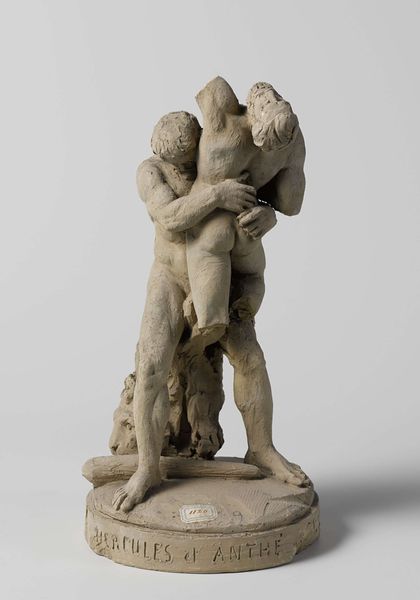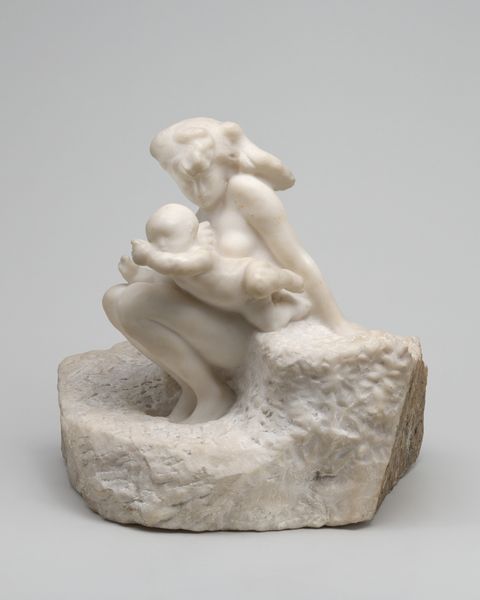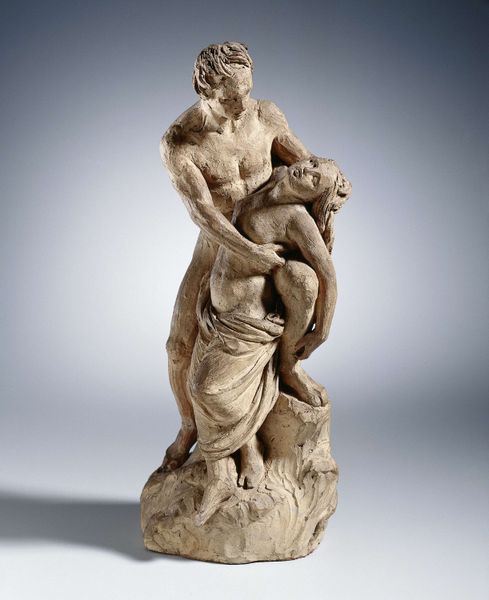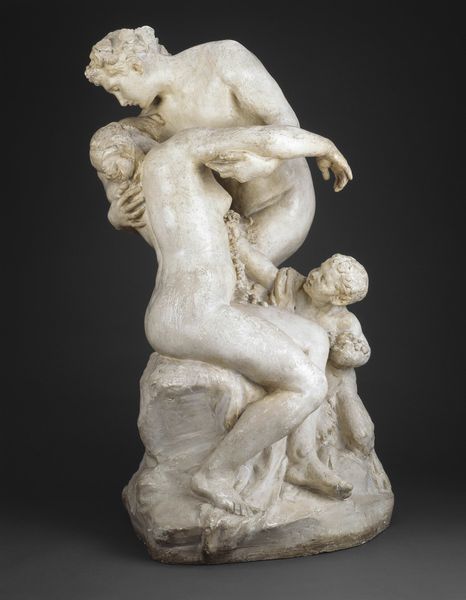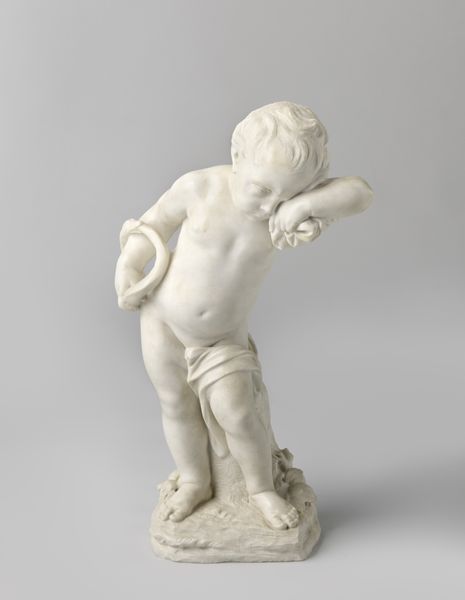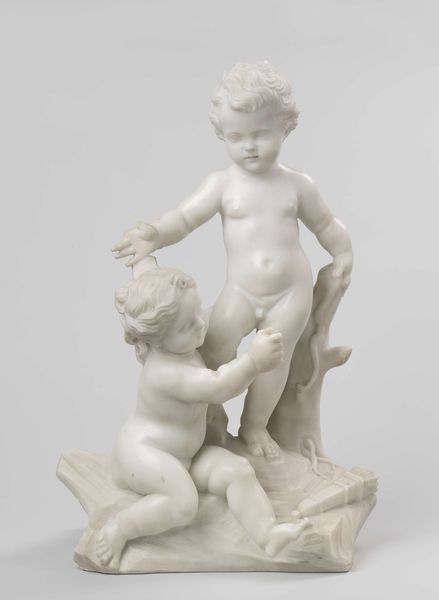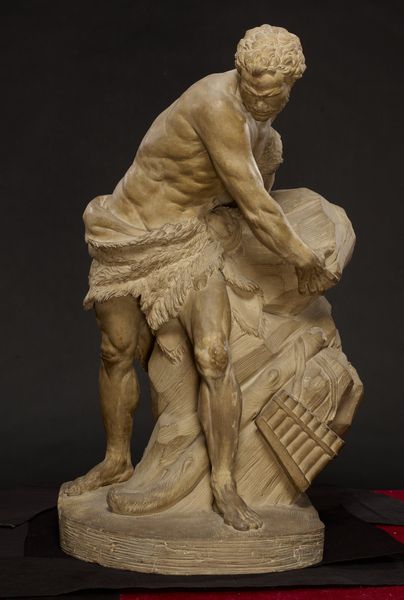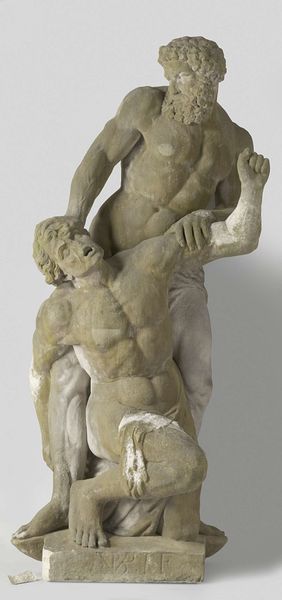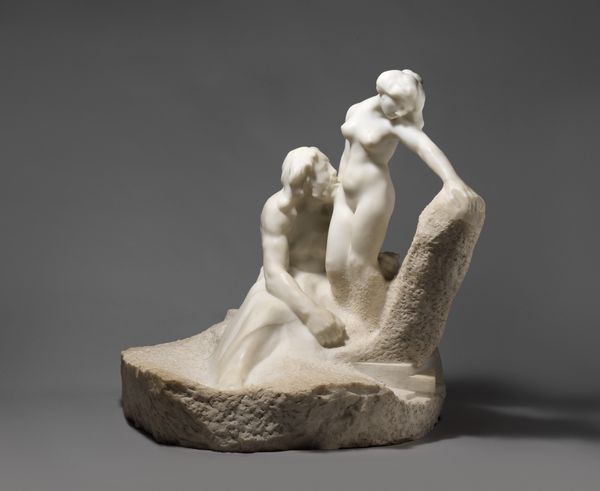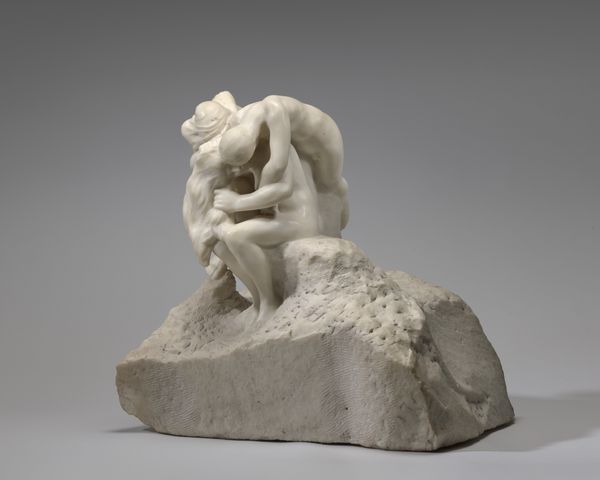
sculpture, marble
#
portrait
#
neoclacissism
#
figuration
#
sculpture
#
genre-painting
#
history-painting
#
marble
Dimensions: height 21 cm, width 11.7 cm, depth 12 cm
Copyright: Rijks Museum: Open Domain
This plaster sculpture by Eugène Lacomblé depicts two putti, cherubic figures common in Renaissance and Baroque art, supporting a round object inscribed with text. The putto, derived from classical Cupid figures, represents divine love and innocence. Think of Botticelli’s “Birth of Venus,” where similar figures guide the goddess ashore. Here, the putti draw upon this historical wellspring, embodying notions of youthful purity and the sacred. The younger putto supporting the engraved tablet makes me think of images of cherubs holding the book of knowledge, echoing the passing of information. The putto, initially a pagan symbol, was absorbed into Christian art, demonstrating how symbols evolve. These figures serve not just as decoration, but as conduits of emotional and psychological depth, linking us to centuries of cultural memory. It is a fascinating cyclical progression, constantly resurfacing, evolving, and gaining new meanings.
Comments
No comments
Be the first to comment and join the conversation on the ultimate creative platform.
